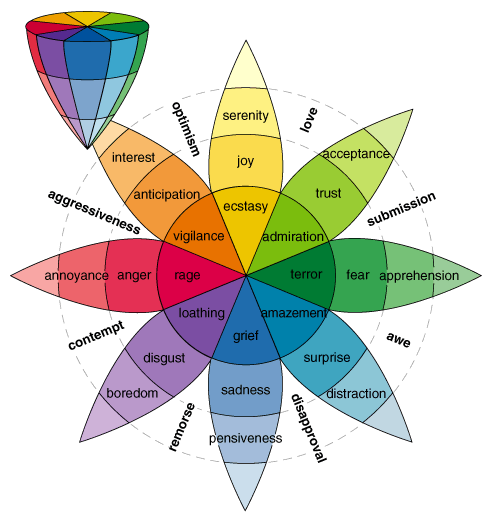Link Building for SEO
Google algorithms are complex, but can be understood simply as a way to rank who has the best links. Links from better sources help your overall search engine rankings and also determine where your competitors results are displayed to potential customers relative your own. So let’s look at how we can get more high-quality links than competing websites.
3 Types of Positive Links
By tradition, links are blue and underlined, but modern websites often override the default behavior with a custom stylesheets.
Editorial Links
Highest Value – Someone influential links in an article, interview, or excerpt
Outreach Links
Most Effective – You explain the value of your content to someone influential
Self-Created Links
Use Caution – These links are sometimes frowned upon, and often “nofollowed”
The Form of Links
Where on your website a link points and the ‘anchor text’ describing it are another signal the search engines use to understand your website and brand.
Homepage Links
kentdagnall.com
Help introduce new visitors to your website and increase overall domain authority
Deep Links
kentdagnall.com/about
Promote blog categories, tags, posts or pages, increasing your ranking for broad keywords
Brand Name Links
The anchor text: “Chef Kent’s recipe blog Lemons and Time“
Provide context for your company name based on nearby keywords
Keyword Links
Anchor text ‘Buttermilk Biscuit recipe’ linking straight to the recipe’s webpage.
Point to topic-specific pages, posts, or products on your site. Score best for specific, non-branded keywords
Step-by-Step Link Building Campaign
Step 1: Is there anyone on the internet that mentions your brand but doesn’t link to your website? How about broken links to pages you’ve moved? Those are both examples of a missed opportunity and an easy fix, so start with the lowest hanging fruit.
Step 2: Identify and prioritize where you want links to come from. Look for sites consistently ranked by Google in position 1-3 for popular search terms, they are always a sure bet.
Free tools like Moz, SEM Rush, Alexa and many others can tell you which websites are worth time and effort, plus how many are linking to your competitor’s sites.
Step 3: Spend time getting to know your target. Read several of their articles or blog posts and make insightful comments on a few without asking for a link. You are proving you can add value to their site without getting something in return.
Step 4: Subscribe to the target’s updates, and when they post a new article with a connection to your content, be one of the first commenters, or send them an email asking for a link.
Link Building Pitch Strategy
As in all things, first be clear on your goals…
“Get 6 new links to kentdagnall.com from sites ranked 1-3 on Google.”
“Earn 1 Top-Ranked website link to any page on kentdagnall.com every month.”
“Support our new client with 15 editorial links to their landing page!”
“We need 35+ links to the urgent call-to-action on our blog ASAP!”

Identifying the Target
Appeal To Emotions
Has your target expressed a strong opinion or outrage?
What is their predominant mood?
Match your target’s tone for best results.
Tell Them Why They Should Care
How many people will it help?
How many jobs are sustained or created?
Most important, how will it help your target?
Grease the Skids, First Build a Rapport
Be a good and active member of their community.
Share, comment and like their content well in advance.
Be Charming
Flatter them.
Make an excellent first impression.
Don’t be shy about how great you are.
Getting a Response
Before you ask for a link, you need to be 100% certain of these two things:
- Your content is the best thing on the internet.
- You’ve got the best angle to make your target care.
Best Content + Best Angle = The Hook
Pro Tip: “Don’t bury your hook.”
Most people start writing and get progressively better as ideas develop. Reread your own writing and pay special attention to your concluding sentences. Are they really convincing? Make your strongest statement the very first sentence in your next edit.
Tell your target exactly what action you want them to take. Be clear you are expecting them to publish your guest post, write an opinion piece on your content, share it to their social followers, or embed your media.

How To Write Content for Link Building
Content that acts as a source for others will get links on its own, requiring no outreach. This is especially true for original research and new data, which other writers can link to when adding their own analysis.
- When writing for links, resist the urge to spin, analyze or editorialize the facts. Try to avoid interpretations that make your content appealing to only one side of an issue.
- If you have a large number of customers or industry connections, consider surveying them and publish the results. Try to identify trends in your industry by asking questions that provide a unique insight, and reinforce or debunk an industry myth.
- When resources and reports are published on your website, try to optimize the title and introduction with keywords other writers would be using to search for source material, rather than a ‘sales pitch’ type of call-to-action.
- Monthly or annual reports are a good place to start, because they can be repurposed frequently and become more valuable over time.
- “Beginner’s Guide,” “What Is…?” and “State Of…” articles all fall into this category, but always make sure you are offering something new and valuable, rather than click baiting.
Limiting Factors
There are more than 100 known SEO signals, and Link Quality is one of the strongest, but it won’t improve rankings in a vacuum.
You should also account for:
- Competitor Activity
- Technical, On-site SEO Factors
- Algorithmic Updates
- Penalties for Spam Links
- Rich Snippets and SERP Features
- Presence and Position of Search Ads


